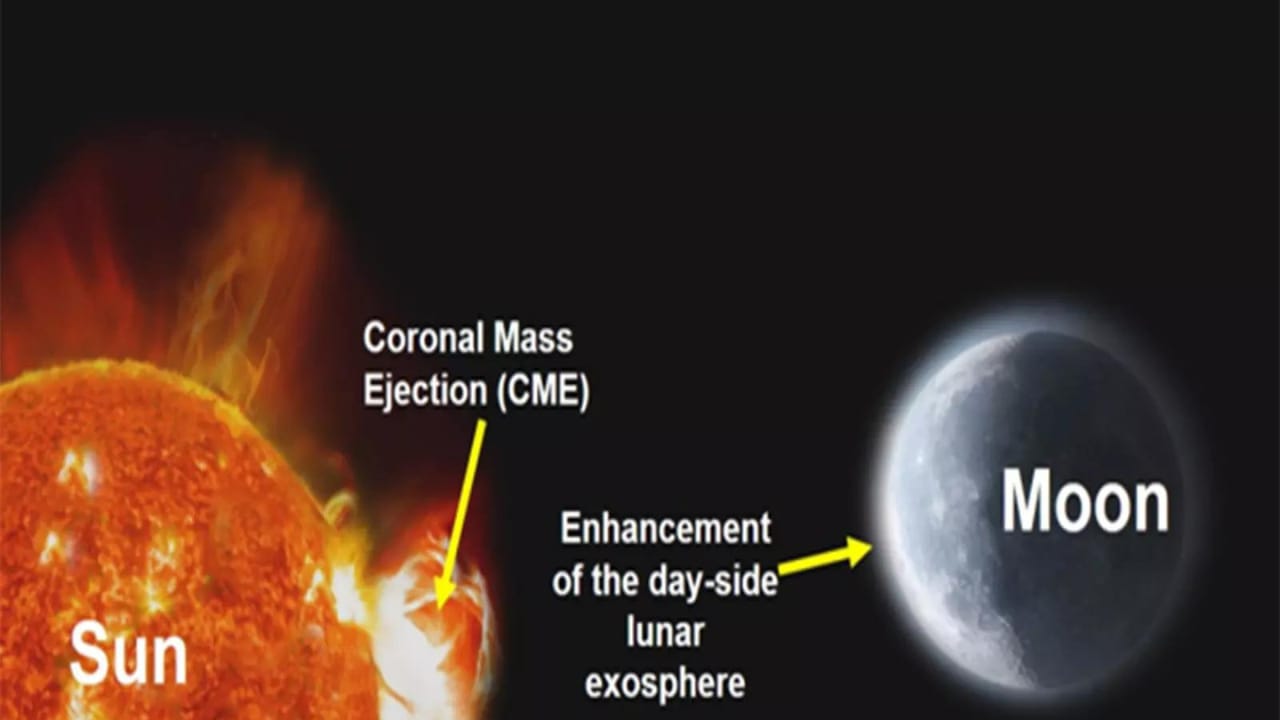Chandrayaan-2’s recent observations mark a historic step by capturing how the Sun’s Coronal Mass Ejections influence the Moon’s exosphere, confirming long-held theories and broadening space weather understanding, vital for future lunar endeavors.
India’s Chandrayaan-2 mission has achieved a historic milestone by making the first-ever direct observation of the Sun’s Coronal Mass Ejections (CMEs) impacting the Moon. Using its onboard instrument Chandra’s Atmospheric Composition Explorer-2 (CHACE-2), the mission recorded a dramatic increase in the pressure and density of the Moon’s exosphere, confirming predictions from long-standing theoretical models.
Key Highlights:
-
Chandrayaan-2 observed the effects of solar CMEs striking the Moon during a rare event on May 10, 2024.
-
The total pressure and number density of neutral atoms and molecules in the Moon’s dayside exosphere increased by more than tenfold.
-
This was the first direct measurement validating that solar CMEs significantly alter the lunar exosphere, made possible by CHACE-2.
-
The Moon’s exosphere is an extremely thin, surface-bound atmosphere sensitive to solar radiation, solar wind, and meteoritic impacts.
-
CMEs eject ions (mainly Hydrogen and Helium) from the Sun that collide with the Moon, knocking atoms off its surface and enriching its exosphere temporarily.
-
The Moon lacks a global magnetic field, making it vulnerable to direct solar effects unlike Earth.
-
This finding deepens understanding of lunar space weather and has critical implications for future lunar mission planning and human habitats on the Moon.
-
The study detailing this observation was published in Geophysical Research Letters in August 2025.
This groundbreaking observation by Chandrayaan-2 not only confirms theoretical models of lunar surface interaction with solar activity but also marks a leap forward in understanding the dynamic lunar environment. It offers vital data for scientists and space agencies designing resilient lunar exploration infrastructure and human habitats, underlining ISRO's growing leadership in space research.
Sources: ISRO, Geophysical Research Letters, Times of India, News On Air, Hindustan Times

